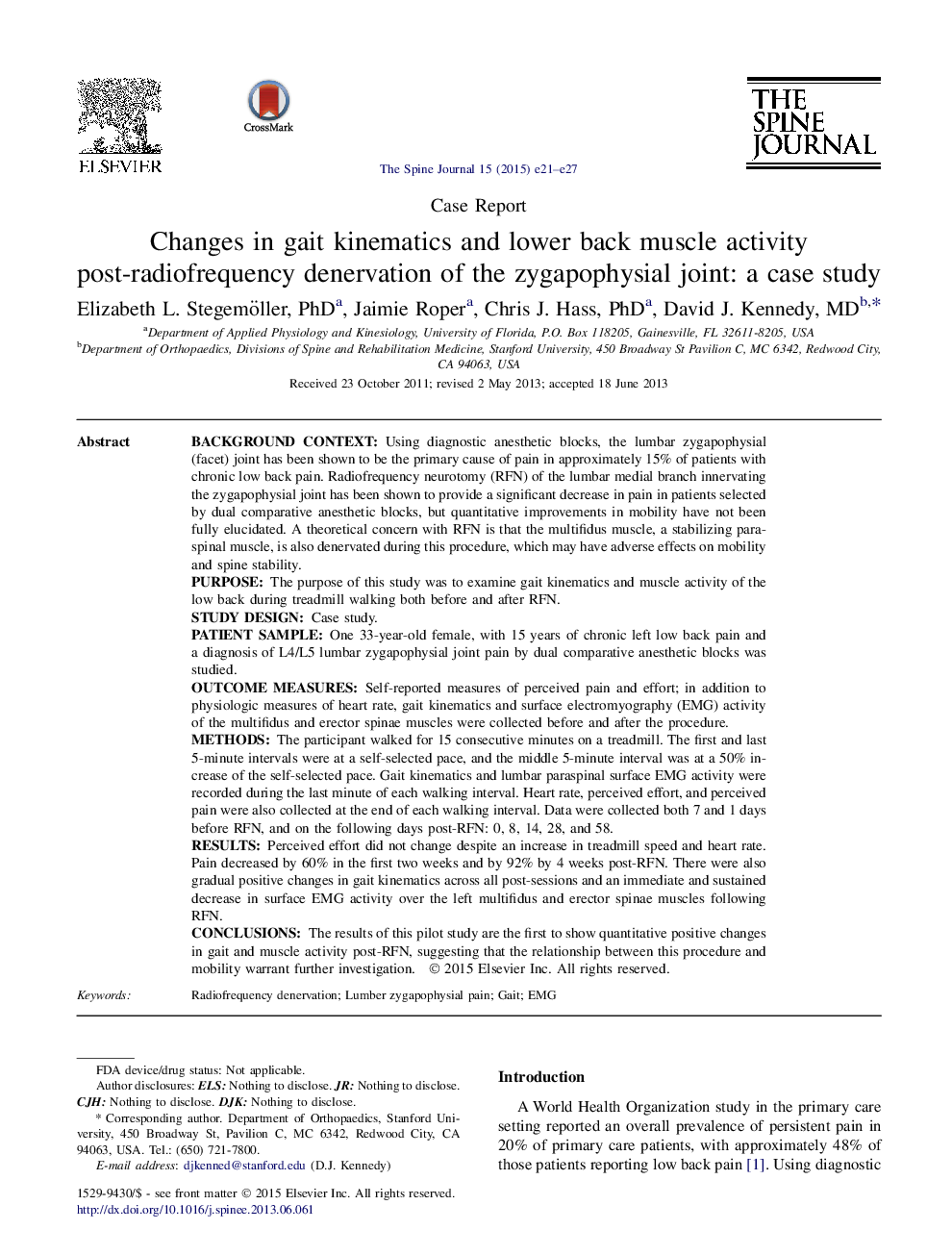| کد مقاله | کد نشریه | سال انتشار | مقاله انگلیسی | نسخه تمام متن |
|---|---|---|---|---|
| 6211985 | 1268561 | 2015 | 7 صفحه PDF | دانلود رایگان |
Background contextUsing diagnostic anesthetic blocks, the lumbar zygapophysial (facet) joint has been shown to be the primary cause of pain in approximately 15% of patients with chronic low back pain. Radiofrequency neurotomy (RFN) of the lumbar medial branch innervating the zygapophysial joint has been shown to provide a significant decrease in pain in patients selected by dual comparative anesthetic blocks, but quantitative improvements in mobility have not been fully elucidated. A theoretical concern with RFN is that the multifidus muscle, a stabilizing paraspinal muscle, is also denervated during this procedure, which may have adverse effects on mobility and spine stability.PurposeThe purpose of this study was to examine gait kinematics and muscle activity of the low back during treadmill walking both before and after RFN.Study designCase study.Patient sampleOne 33-year-old female, with 15 years of chronic left low back pain and a diagnosis of L4/L5 lumbar zygapophysial joint pain by dual comparative anesthetic blocks was studied.Outcome measuresSelf-reported measures of perceived pain and effort; in addition to physiologic measures of heart rate, gait kinematics and surface electromyography (EMG) activity of the multifidus and erector spinae muscles were collected before and after the procedure.MethodsThe participant walked for 15 consecutive minutes on a treadmill. The first and last 5-minute intervals were at a self-selected pace, and the middle 5-minute interval was at a 50% increase of the self-selected pace. Gait kinematics and lumbar paraspinal surface EMG activity were recorded during the last minute of each walking interval. Heart rate, perceived effort, and perceived pain were also collected at the end of each walking interval. Data were collected both 7 and 1 days before RFN, and on the following days post-RFN: 0, 8, 14, 28, and 58.ResultsPerceived effort did not change despite an increase in treadmill speed and heart rate. Pain decreased by 60% in the first two weeks and by 92% by 4 weeks post-RFN. There were also gradual positive changes in gait kinematics across all post-sessions and an immediate and sustained decrease in surface EMG activity over the left multifidus and erector spinae muscles following RFN.ConclusionsThe results of this pilot study are the first to show quantitative positive changes in gait and muscle activity post-RFN, suggesting that the relationship between this procedure and mobility warrant further investigation.
Journal: The Spine Journal - Volume 15, Issue 6, 1 June 2015, Pages e21-e27
